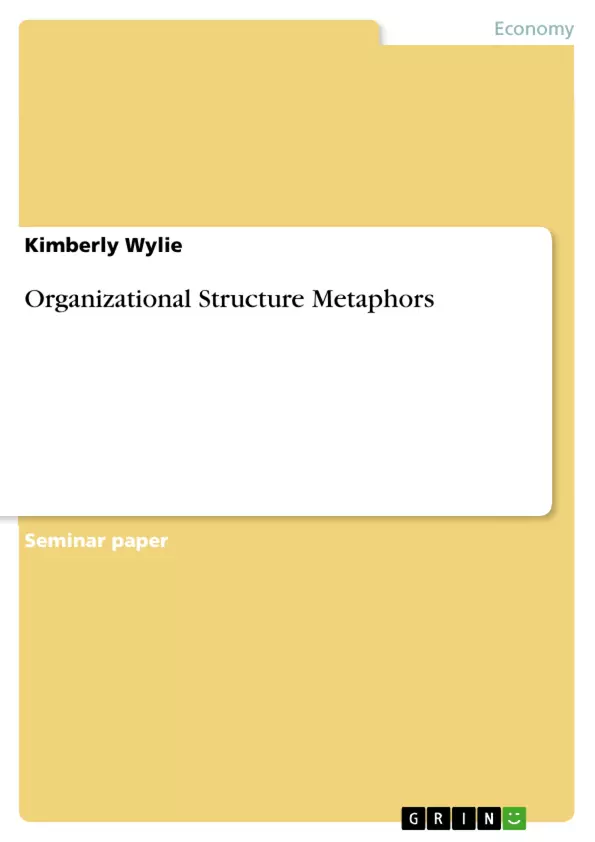In today’s hyper-competitive world, organizations struggle daily to garner and maintain valuable market share. Thanks to globalization, businesses are experiencing competition from all four corners of the globe. It is now common for competitors to operate in completely different environments, both internally and externally. Despite the increased opportunities offered by globalization, it becomes increasingly difficult for some companies to remain competitive. As such, aspects such as “superior/subordinate relationships, leadership, teamwork, motivation, and conflict management” (Norris, 2000, p. 105) become ever more important, and each of these hinges upon the organization’s structure. Organizational structure can be defined as "the recurrent set of relationships between organization members" (Donaldson, 1996, p. 57). There are four common characteristics for all organizations despite their structure and design. They all have some sort of hierarchy of authority. They also all have coordination of effort and with this coordination, is a division of labor. In the end, they all also have a common goal the organization is working towards. (Kreitner & Kinicki, n.d.)
Inhaltsverzeichnis (Table of Contents)
- Introduction:
- Military/Mechanical Model Metaphor:
- Organic/Biological System Metaphor:
- Cognitive System Metaphor:
- Ecosystem Metaphor:
- How effective are the metaphors in enabling a greater understanding of organizational processes to be developed?:
Zielsetzung und Themenschwerpunkte (Objectives and Key Themes)
This paper explores the effectiveness of various organizational structure metaphors in understanding and developing organizational processes. The goal is to provide insights into how these metaphors can contribute to the development of effective organizational structures that can adapt to changing environments and enhance performance.
- Comparison of different organizational structure metaphors (military/mechanical, organic/biological, cognitive, and ecosystem)
- The impact of organizational structure on innovation, efficiency, and team dynamics
- The importance of organizational adaptability and its relationship to competitive success
- The role of technology in shaping organizational structure and its evolution
- The contrast between open and closed systems in organizational structures
Zusammenfassung der Kapitel (Chapter Summaries)
- Introduction: This chapter introduces the significance of organizational structure in today's competitive business environment, emphasizing the importance of understanding the complex relationships between organizational members. It also highlights the role of metaphors in clarifying abstract organizational concepts.
- Military/Mechanical Model Metaphor: This chapter delves into the origins and characteristics of the military/mechanical organizational structure, which emerged from the demands of World War II. It describes the hierarchical structure, formalized processes, and centralized decision-making associated with this model. It also discusses its limitations in adapting to dynamic environments.
- Organic/Biological System Metaphor: This chapter explores the organic/biological organizational structure, contrasting it with the military/mechanical model. It highlights the key aspects of adaptability, interdependence, and decentralized decision-making that characterize this structure. It also emphasizes the role of communication and collaboration in fostering innovation and efficiency.
Schlüsselwörter (Keywords)
The key terms and concepts explored in this text include: organizational structure, metaphors, military/mechanical, organic/biological, cognitive, ecosystem, innovation, adaptability, efficiency, team dynamics, open systems, closed systems, technology, communication, collaboration.
- Quote paper
- Kimberly Wylie (Author), 2003, Organizational Structure Metaphors, Munich, GRIN Verlag, https://www.grin.com/document/60425



